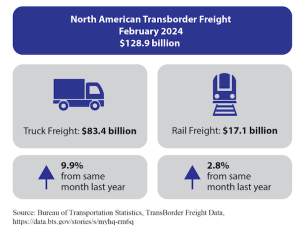Congress should include comprehensive funding policies for the first time in the upcoming transportation reauthorization bill to both modernize freight transportation and clean it up by favoring innovations like those highlighted in a new report. Freight transportation currently is the most polluting and fastest growing transportation sector.
The clean freight innovation locations include, but are not limited to: Southern California; Chicago; Seattle; Norfolk, Virginia; andalong the Gulf Coast between Port Manatee, Florida and Brownsville, Texas.
The report is timely since Senate Environment and Public Works Committee Chairwoman Barbara Boxer (D-CA) recently vowed to take up a transportation reauthorization bill this year, and the EPW Committee has initiated a series of hearings on issues to be addressed in the bill.'Senator Boxer has said she would use the $500 billion bill already introduced in the U.S. House of Representatives as a framework.
'This report provides a roadmap for modernizing the U.S. freight system, making it more reliable and faster, and reducing greenhouse gases and air pollution,' says Kathryn Phillips, director of the California Transportation and Air Initiative at Environmental Defense Fund, whose staff produced the report.''House and Senate committees writing the transportation bill should ensure funding for freight improvement delivers environmental benefits too.'This report shows it can be done.'
The report, The Good Haul, details 28 case studies of clean freight solutions that exist in the United States and internationally.'Congress should direct any freight improvement funding to encourage clean freight solutions to improve freight's performance and protect public health and the environment.
'Now is ideal time to tackle these challenges,' says James Corless, director of Transportation for America, a coalition of more than 450 organizations nationwide focused on creating a national transportation program for the 21st century by modernizing our infrastructure and building healthy communities.''The upcoming reauthorization of the federal transportation bill is a great opportunity to help achieve a smarter, greener freight system.'
Freight delivers nearly everything we buy, eat, manufacture, or build with to us via a complex system of shipping routes, rail lines, highways, ports, and rail yards. Unfortunately, U.S. freight movement represents 25 percent of transportation's contributions to greenhouse gases, and its share of emissions is climbing twice as fast as passenger travel.'By 2020, more than 90 million tons of freight are expected to move throughout the United States, an 80 percent increase from 2002.
Freight air pollution is an enormous health threat.'The fine particle pollution from U.S. diesel engines'the most common engines used in freight'is estimated to shorten the lives of more than 20,000 people each year.
The California Air Resources Board estimates that in 2005 freight-related pollution and health effects cost the state nearly $20 billion and caused about 2,400 premature deaths, 2,000 respiratory-related hospital admissions, more than 60,000 asthma and lower respiratory cases, 360,000 lost work days, and more than 1 million lost school days.







